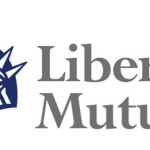The Travelers Companies reported an 18 percent drop in net profit for the second quarter largely due to a 50 percent rise in losses from catastrophes.
Catastrophe losses of $333 million, up from $221 million for the same period last year, included claims from the wildfires at Fort McMurray in Canada and hail storms in Texas.
Net and operating income of $664 million and $649 million, respectively, declined from the prior year quarter, primarily due to the higher catastrophe losses, higher non-catastrophe weather-related losses and lower net investment income.
It was the smallest quarterly profit since 2012 after superstorm Sandy.
Travelers is among the first insurers to report results. Several insurers including XL and Chubb have indicated they would be reporting high catastrophe losses for the second quarter also.
Operating income in the quarter was $649 million, compared to $806 million, in the prior year quarter.
April saw the worst global natural disaster losses in five years, according to Impact Forecasting, Aon Benfield’s catastrophe model development team.
Underwriting Return
Despite the $333 million in catastrophes and other weather losses of $135 million, Travelers managed a 93.1 combined ratio
In the low-interest rate environment, it earned an operating return on equity of 11.6 percent, which CEO Alan Schnitzer said highlights the company’s “ability to continue to generate attractive underwriting returns.”
Record net written premiums of $6.345 billion increased 3 percent, primarily driven by growth in Personal Insurance and domestic Business Insurance net written premiums.
Personal Insurance
Operating income for Personal Insurance was $116 million after-tax, a decrease of $58 million, primarily driven by lower net favorable prior year reserve development. The prior year quarter included a $4 million tax benefit.
The combined ratio of 95.7 increased 4.6 points due to lower net favorable prior year reserve development (3.5 points) and a higher underlying combined ratio (1.1 points).
Record net written premiums of $2.129 billion increased 9 percent. Agency Automobile net written premiums grew 14 percent with an increase in policies in force of 11 percent from the prior year period.
Business and International
Operating income for Business and International Insurance was $393 million after-tax, a decrease of $150 million, primarily driven by higher catastrophe losses, higher non-catastrophe weather-related losses and lower net investment income, partially offset by higher net favorable prior year reserve development. The prior year quarter also included a $12 million tax benefit.
The combined ratio of 97.5 increased 4.3 points due to higher catastrophe losses (2.9 points) and a higher underlying combined ratio (2.4 points), partially offset by higher net favorable prior year reserve development (1.0 point).
Net written premiums of $3.680 billion were comparable with the prior year quarter. Domestic net written premiums increased 2 percent, while international net written premiums decreased 12 percent, primarily affected by changes in foreign currency exchange rates, disciplined underwriting and lower levels of economic activity in the European operations, including Lloyd’s.
Bond and Specialty
Operating income for Bond & Specialty Insurance was $202 million after-tax, an increase of $51 million, primarily driven by higher net favorable prior year reserve development. The prior year quarter included a $16 million tax benefit.
The combined ratio was very strong at 52.4 and improved 21.3 points due to higher net favorable prior year reserve development (21.4 points) and a lower underlying combined ratio (0.2 points), partially offset by higher catastrophe losses (0.3 points).
Net written premiums of $536 million were comparable to the prior year quarter.
Topics Catastrophe Profit Loss
Was this article valuable?
Here are more articles you may enjoy.


 Rising Prices, Low Satisfaction Drive 49% of Customers to Shop For New Auto Insurance
Rising Prices, Low Satisfaction Drive 49% of Customers to Shop For New Auto Insurance  Cracks in O’Hare Columns Aren’t Insured Property Damage, Just Bad Product – Court
Cracks in O’Hare Columns Aren’t Insured Property Damage, Just Bad Product – Court  Liberty Mutual Posts $1.5B Net Income for Q1, Reversing Loss
Liberty Mutual Posts $1.5B Net Income for Q1, Reversing Loss  Progressive Set to ‘Maximize’ Growth, Building on Q1
Progressive Set to ‘Maximize’ Growth, Building on Q1 

